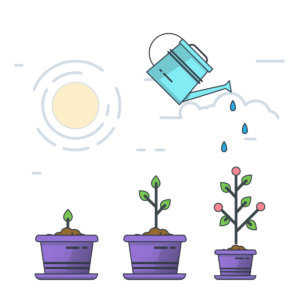The End of Scale
New technology-driven business models are undercutting the traditional advantages of economies of scale. But large companies still have strengths to exploit — if they move quickly.
Topics
For more than a century, economies of scale made the corporation an ideal engine of business. But now, a flurry of important new technologies, accelerated by artificial intelligence (AI), is turning economies of scale inside out. Business in the century ahead will be driven by economies of unscale, in which the traditional competitive advantages of size are turned on their head.
Economies of unscale are enabled by two complementary market forces: the emergence of platforms and technologies that can be rented as needed. These developments have eroded the powerful inverse relationship between fixed costs and output that defined economies of scale. Now, small, unscaled companies can pursue niche markets and successfully challenge large companies that are weighed down by decades of investment in scale — in mass production, distribution, and marketing.
Investments in scale used to make a lot of sense. Around the beginning of the 20th century, the world was treated to a technological surge unlike any in history. That was when inventors and entrepreneurs developed cars, airplanes, radio, and television, and built out the electric grid and telephone system.
These new technologies ushered in the age of scale by enabling mass production and offering access to mass markets. Electricity drove automation, allowing companies to build huge factories to churn out a product in massive quantities. Radio and TV reached huge audiences, which companies tapped through mass marketing. The economies of scale governed business success.
Scale conferred an enormous competitive advantage. It not only lowered fixed costs — it also created a forbidding barrier to entry for competitors. Organizations of all kinds spent the 20th century seeking scale. That’s how we ended up with giant corporations, and universities with 50,000 students, and multinational health care providers.
Today, we’re experiencing a new tech surge. This one started around 2007, when mobile, social, and cloud computing took off with the introduction of the iPhone, Facebook, and Amazon Web Services (AWS), respectively. Now, we’re adding AI to the mix. AI is this century’s electricity — the technology that will power everything.
AI has a particular property that supplants mass production and mass marketing as a basis of competitive advantage. It can learn about individuals and automatically tailor products for them at scale.
References
1. “Disrupting Procter & Gamble: Private Companies Unbundling P&G and the Consumer Packaged Goods Industry,” CB Insights, April 19, 2016, www.cbinsights.com.
2. N.N. Ozkan, “An Example of Open Innovation: P&G,” Procedia: Social and Behavioral Sciences 195 (July 3, 2015): 1496-1502.
3. J. Bezos, “2016 Letter to Shareholders,” Amazon.com, April 12, 2017, www.amazon.com.


Comments (7)
Javier Venegas Contreras
Girish Khanna
Joseph Soueidi
Ray Eitel-Porter
Richard Reisman
Richard Reisman
MeenakshiSundaram Balasubramanian